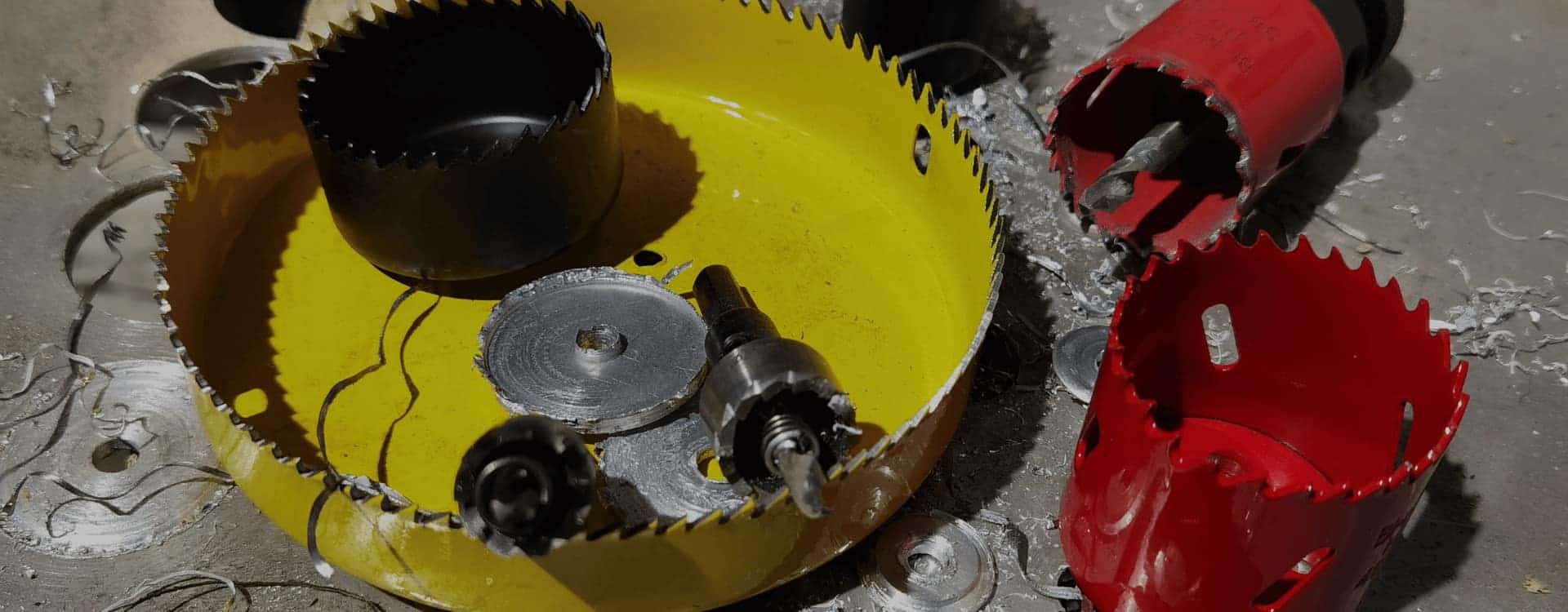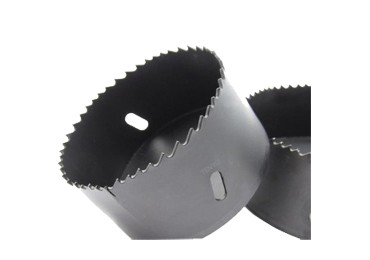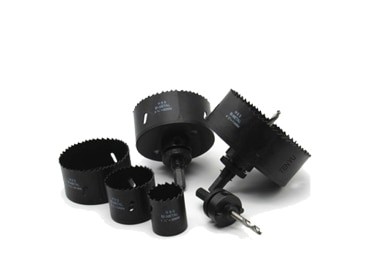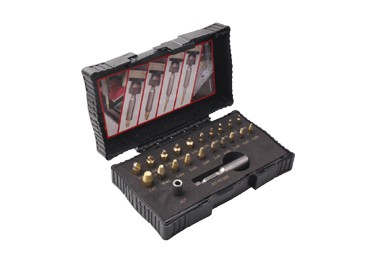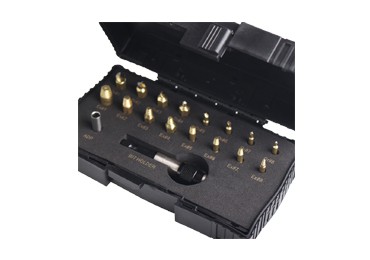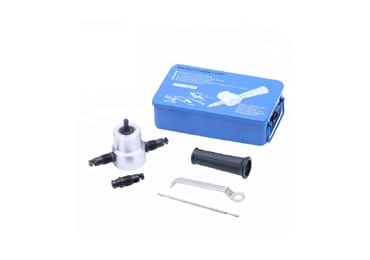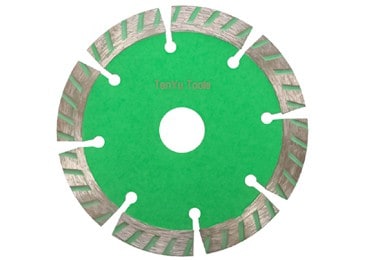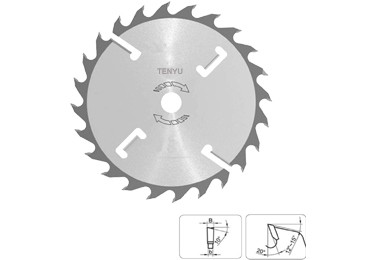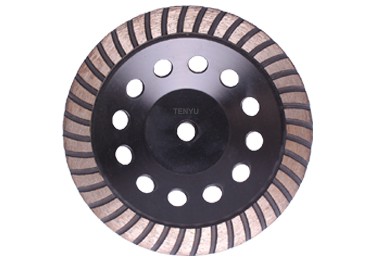Bi-metal Hole Saw
- Your Trusted and Reliable Bi-Metal Hole Saw Manufacturer
- You access Tenyu Tools premium bi-metal hole saw and other products.
- You enjoy great benefits when you import items from Tenyu Tools.
- You get huge discounts and exciting perks as an importer.
- Tenyu Tools can customize your bulk orders and deliver them on time.
- All products are engineered with high-craftsmanship and precision.
- Tenyu Tools use high-quality materials to produce bi-metal hole saws.
- Every item is covered by the manufacturer’s warranty.
- Tenyu Tools is duly-certified by the industry’s top standard organizations.
- Tenyu Tools Offer Industrial Quality Products
Tenyu Tools: Your Premier Bi-metal Hole Saw Manufacturers
If you are looking for a tougher cutter, the bi-metal hole saw is your best option.
It is made of two premium metals with a super sharp cutting edge that gets the job done.
The materials that are typically used to make a bi-metal hole saw are:
- High-speed steel (HSS)
- Cobalt (about 8% in the cutting edge)
The combination of these materials optimizes the power of the hole saw to cut large holes.
It can remove material on the edge without damaging the core part.
Features
A bi-metal hole saw typically features the following:
- Main body
It houses the cutting edge and the mounting edge.
This circular band is made of high-speed steel, providing a strong base to the features.
- Cutting edge
One end of the bi-metal hole saw has serrated teeth that cut large and deep holes.
The cutting edge works by biting through the work material as it passes through.
The cutting edge has either constant or variable teeth configuration.
- Arbor or mandrel
This component holds the pilot bit in the interior of the bi-metal hole saw.
It also connects the hole saw to the chuck of the power tool.
- Pilot drill bit
It is a fixed or removable bit that helps to create holes in the right locations.
It prevents the teeth of the bi-metal hole saw from wandering off.
- Slots
These are the straight or circular slopes along the wall.
Slots help the chips and dirt to escape and keep your bi-metal hole saw cool.
Product Applications
A bi-metal hole saw is your best ally in metal and woodcutting.
For excellent outcomes, always use the suitable bi-metal hole saw for a particular application.
This type of hole saw is ideal for:
- hardware installations like door lock and deadbolt
- electrical and sanitary installations
- hole cutting in ceilings for light fittings or fixtures
- cutting holes for wires and cables
- cutting masonry vents
- extra connections in pre-existing pipework
- woodworking applications
Related Products Mention
Forging a strong relationship with your supplier is essential to the success of your business.
You also need to deliver the best products to your clients.
This is why partnering with Tenyu Tools is the best decision you can make.
Tenyu Tools has a wide range of high-quality bi-metal hole saws and other tool accessories.
It has all types of much-sought drill bits, hole saws, saw blades, and more for power tools.
All products are engineered to last longer and deliver top performance.
Don’t be left behind in the competition.
It is high-time to escalate your wholesale, distribution, or importation business.
All it takes is to partner with a trusted and reliable supplier like Tenyu Tools.
Tenyu Tools is a China-based manufacturer that is working with the world’s famous brands.
They have distributors in Eastern and Northern Europe as well as North America.
Contact them now if you need high-quality pieces of bi-metal hole saw.
You will be surprised how easy it is to earn more profits with Tenyu Tools as your supplier.
Send Inquiry to Tenyu Tools now!
Bi-metal Hole Saw has two different tool steels
The main body is carbon steel and the cutting edge is high speed steel, the cutting edge materials have two types:
- HSS M8
- HSS M42
Remember to use the lubricant.
Bi-Metal Hole Saw FAQs
For drilling large holes in metals, the best option is to use a bi-metal hole saw.
The cutting edge of this type of hole saw is known for its sharpness and smooth cuts.
A bi-metal hole saw is a drilling blade that uses high-speed steel and another metal in the teeth.
The metal-reinforced edge of the bi-metal hole saw can drill large holes faster and better.
Choosing the right hole saw for a specific application makes the job easier to complete.
To help you find the correct bi-metal hole saw, here’s the ultimate guide for you.
It contains information about its uses, properties, features, advantages, usage, and maintenance.
And if you’re searching where to find a trusted wholesaler of bi-metal hole saw, we got you covered.
Before rushing to put into the cart the bi-metal hole saw you see online or in the physical store, read this first.
What is a Bi-Metal Hole Saw?
As the name suggests, a bi-metal hole saw is created using high-speed steel and another metal.
These two different kinds of steel are joined together to produce a high-performing cutter.
The cutting edge of a bi-metal hole saw is constructed on one side of the cylindrical hole saw.
This section features the sharp teeth that are known for cutting difficult-to-drill metals.
It can also cut other tough materials such as:
- stainless steel
- sheet metal
- aluminum
- brass
- copper
- brick
- marble
- cement board
- slate
- fiberglass
- wood
- nail embedded woods
- engineered wood
- cast iron
- plywood
- laminated plastics
Avoid using a bi-metal hole saw to cut through ceramic, granite, and porcelain.
These materials require carbide-grit hole saws.
What are the Characteristics of a Bi-Metal Hole Saw?
A bi-metal hole saw is an optimized type of drilling tool that cuts faster and better.
The short and open cylinder form has teeth on the open edge.
It removes material on the edge without cutting out the disc or core in the interior.
The cutting edge and the main body of this hole saw are usually made of:
- High-speed steel
- Cobalt (8%)
High-speed steel or HSS is the more superior type of high-carbon steel.
It can withstand higher temperatures without losing its temper or hardness.
High-speed hole saws generally demonstrate Rockwell hardness 60 or high hardness.
It is also renowned for its ability to resist rust and abrasion.
The high-speed steel is used for the main body and the outer edge of the bi-metal hole saw.
This allows you to drill large holes in a multitude of materials.
The high wear-resistance property of high-speed steel promises long life and multiple uses.
Cobalt is another metal used in a bi-metal hole saw.
Most manufacturers incorporate 8% cobalt in the cutting edge area.
This results in a sharper, more superior cutting ability during long, high-operating temperatures.
How is a Bi-Metal Hole Saw Made?
A bi-metal hole saw features:
Main body
The high-speed steel main body features both the cutting edge and the mounting edge.
The steel band is welded into the steel body and backplate.
Cutting edge
The cutting edge with sharp serrated teeth can bore deep and large diameter holes.
The teeth of the bi-metal hole saw are usually set at the 60° angle for adequate side clearance.
When rotated, the cutting blade “bites” through the work material as it passes through.
The teeth usually have a constant pitch or variable pitch to “bite” into the work material.
- Constant pitch
A constant pitch refers to the distance between two points or teeth.
- Variable pitch
An irregular setup is called a variable pitch.
It actually helps in reducing harmonic vibrations or breaking the sawing rhythms.
When there are fewer vibrations, the results are smoother cuts and reduced wear.
They eliminate clogging and lower the noise levels of the bi-metal hole saw.
Another factor to consider is the TPI or Teeth Per Inch.
It measures the teeth frequency on the cutting edge.
It varies from 2 teeth per inch up to 20 teeth per inch.
A hole saw with a higher TPI produce finer cuts, but a little slower.
Lower TPI drills faster but the results are less smooth due to larger teeth that can tear the fiber.
Arbor
The arbor is the shaft that grips the rotating part of the bi-metal hole saw.
It is often called a mandrel and works to connect the hole saw to the drill chuck.
This component is constructed from steel alloy and hardened steel.
The arbor also holds the pilot bit.
Smaller bi-metal hole saws connect to the arbor with the thread in the cap.
Bigger hole saws have pinholes in their cap to receive the arbor’s drive pin for quick changing.
Pilot drill bit
A pilot drill bit is for drilling pilot holes and guiding the bi-metal hole saw into the correct position.
It prevents the hole saw teeth from wandering, creating smooth holes without cutting up the core.
It is attached to the arbor inside the hole saw and is replaceable when damaged or worn.
Some arbors do not have attached drill bits.
Slots
The slots are the circular or straight slopes that allow dust and chips to escape.
The number of slots in the wall of the bi-metal hole saw depends on the model or manufacturer.
Some have two slots, while others have up to 6 slots that allow more chippings to escape.
Beyond these numbers can compromise the bi-metal hole saw strength.
What are the Common Applications of a Bi-Metal Hole Saw?
A bi-metal hole saw is best suited for metal and woodcutting.
You can use a bi-metal hole saw for:
- electrical and sanitary installations
- tubing and pipe installations
- hardware installations like door lock and deadbolt
- hole cutting in ceilings for light fittings or fixtures
- extra connections in pre-existing pipework
- cutting holes for wires and cables
- cutting masonry vents
For safety and best outcomes, always use a hole saw that is made to cut a particular material.
Choose high-speed steel or HSS bi-metal hole saw for great performance in the drywall sector.
It has a high concentricity that helps you create larger cutting depths.
The best results that you can achieve when cutting tough steels is up to 5.0 mm thickness.
With wood materials or soft plastics, you can easily achieve up to 28.0 mm depth.
It is also necessary to observe the appropriate cutting speed and use a lubricant.
The lubrication lengthens the life of your bi-metal hole saw.
How Does Toothing Influence the Performance of a Bi-Metal Hole Saw?
The toothing set-up significantly influences the quality of the cuts.
A bi-metal hole saw with HSS varied toothing is ideal for aluminum, plasterboard, and wood.
- It cuts up to 55 mm cutting depth in unalloyed steel, non-ferrous metals, and light building boards.
- It makes slightly coarser holes for 68 mm diameter sockets and light switches.
- It is also perfect for creating cable ducts in kitchen worktops and desks.
A hole saw with HSS-Co 8 (or with 8% cobalt) fine toothing suits alloyed and non-alloyed steel.
The high cobalt content of the cutting edge provides high hot hardness.
This ensures that your steel tool sustains its hardness even at high temperatures.
- It is very reliable in cutting rust and acid-resistant and high-chromium steels.
- It can make up to 5 mm depth cut with less effort and smooth running.
- It generates a lower heat generation while cutting, increasing the tool’s service life.
When drilling with your bi-metal hole saw, follow these precautionary measures:
- Always drill with light and steady pressure.
- Follow the table of speeds for drilling.
- Avoid making pendulum movements,
- Use recommended cooling agents.
- Do not use it for percussion-drill operation.
Why is it Important to Follow the Correct RPMs for Bi-Metal Hole Saw?
The correct number of revolutions per minute (RPMs) delivers more precise, smoother results.
Excessive speed brings heat build-up that can damage your bi-metal hole saw.
Cutting beyond the proper speed also causes loss of accuracy and control.
Remember that the material’s density and substrate hardness varies.
To ensure correct results, it is necessary to drill using the right speed.
Observe these two rules when using a bi-metal hole saw:
- As the hole diameter increases, the RPM or speed should decrease.
- Denser and harder materials require slower cutting speed.
By following them, you lessen the heat-build and the bi-metal hole saw burnout.
What are the Advantages of Using a Bi-Metal Hole Saw?
A bi-metal hole saw is a versatile tool and can be used with multiple applications.
Its strong abilities are due to the heat-treatment production process that it went through.
The two different metals prolong their service life by 30%.
The 8% cobalt content of high-speed steel makes it harder.
The high alloy steel fuselage of the cutting edge generates small vibration.
A bi-metal hole saw works without the need to cut up the center of the material.
- It operates quickly and is more stable during the operation.
- It is more resistant to chipping issues.
- It can make a cutting diameter of 14mm to 210mm and up to 38mm cutting depth.
- A bi-metal hole saw uses much less power to create holes.
- It saves energy, increasing the battery life of the drilling tool.
What Bi-Metal Hole Saw Sizes are Available?
Hole saws usually come between ½ inch to 8 ½ inches (14mm-210mm) in diameter.
- 14mm (9 ½ inch) hole saws are best for creating domestic pipework holes
- 32mm (1 ⅕ inch) hole saws make 1 inch in diameter pipes
- 51mm (2 inches) hole saws are ideal for making holes for cables and computer wires
- 121mm (4 ¾ inches) hole saws create holes for light fittings and larger drainage pipes
Most brands of bi-metal hole saw print their measurement on the cutting blade’s wall.
The maximum cutting depth of the hole saw is determined by the length of the cutter.
The cutting depth is the maximum depth that the hole saw can do without breaking off the slug.
Depending on the model and structure, you can cut from ⅞ inches to 14 inches (22mm-350mm).
How to Use a Bi-Metal Hole Saw Properly?
When you need clean and quick large-diameter holes, the best solution is a bi-metal hole saw.
However, it is more complicated to use compared to traditional drill bits.
Steps to follow:
- Drill the pilot hole to guide your bi-metal hole saw.
- Keep the bit level as you drill or secure it to prevent it from spinning.
- Align the arbor’s drill bit by keeping even contact with the material.
- Drip a little amount of lubricant over the cutting edge before drilling.
- Keep the drill steady and squeeze its trigger lightly.
- Apply a moderate amount of pressure on the trigger to keep the drill steady.
- Regularly pause to drill out from the hole to avoid overheating and clogging.
- To make a smoother finish, saw from the opposite side of the workpiece.
- Remove the slug that collects in the hole saw to keep it in good working condition.
If you need deeper or wider holes, you can use an arbor extension for the bi-metal hole saw.
It is a hexagonally-shaped rod with a socket on the end that accepts the shank from the arbor.
Arbor extensions are usually sized from 5 ½ inches to 13 inches (140mm-330mm).
The arbor extension helps you reach a deeper depth and make deeper holes.
What are the Ways to Optimize Your Bi-Metal Hole Saw?
Here are some techniques you can do to ensure that you do it right:
- Choose the right size of bi-metal hole saw to make the job done.
- Use an appropriate power drill like a 14V cordless model for softer or thinner material.
- To prevent damage on the cutting edge, use a drill with an adjustable speed function.
- Ensure that the arbor and the pilot bit are securely attached to the power drill.
- Make sure that the pilot bit extends between 3/16 to ¼ inch from the tooth endpoints.
- Keep your bi-metal hole saw vertical when using a corded or a cordless drill.
- When drilling metals, lubricate your tool by using a good grade cutting oil.
- Always reduce the drilling speed and drilling force when creating larger hole saws.
- Never turn off the power when drilling to prevent damage to the teeth.
- Start off slowly, then gradually increase your rotation speed as you go.
- Always use gentle, consistent pressure to achieve perfectly circular holes.
- Check that the full perimeter of your bi-metal hole saw’s teeth contacts the work surface.
- Cut at a 90-degree perpendicular angle to the workpiece to prevent binding or burning out.
- When drilling metals, lubricate your tool by using a good grade cutting oil.
What Safety Precautions You Need to Do When Using a Bi-Metal Hole Saw?
Keeping yourself safe at all times is vital.
Never modify a bi-metal hole saw for any purpose to avoid personal injury or accident.
A drill with a side handle provides better control and stability.
Before the operation, you must outfit yourself with:
- Eye protection and mouthguard
They prevent you from inhaling or getting the splinters and dust in the eyes.
- Ear protection
It will safeguard your hearing during extended drilling periods
- Safety gloves
It keeps your hand protected during cutting.
- Wear proper working clothes and shoes.
Avoid loose clothing or jewelry that may entangle in the bi-metal hole saw.
- Use a cap if you have long hair.
During the drilling:
- Do not pick up chips or touch objects after cutting because the heat can cause a burn.
- Always observe your foot positions because the ejected substrates are hot.
How to Take Care of a Bi-Metal Hole Saw Sizes?
Like other tool attachments, the bi-metal hole saw needs proper care.
It is important to visually check your tool for damage, tear, or wear before use.
Frequent lubrication of the blade during the cutting process also plays a big role.
It brings less friction, smooth performance, and keeps the cutting edge cooler.
Cleaning
Cleaning it regularly keeps it in good condition and prolongs its life.
It is important to clean your bi-metal hole saw after each use to eliminate chips or dust.
This prevents saw bind or getting the chips stuck in the material you are working on.
Leaving them uncleaned can cause teeth and material damage.
Once the cutting edge becomes dull, it is hard to resharpen it.
Clearing chips
It is necessary to remove waste materials frequently during cutting by backing out your drill.
This helps in clearing sawdust and chips from the teeth of the bi-metal hole saw.
The action also keeps the cutting edge cool, reducing teeth damage.
Another way to clear chippings is to reverse your hole saw’s direction.
Removing plug or slug
You may also consider buying a model with more among of speed slots cut into the walls.
Another option is to find a more advanced design with an ejector spring
This useful accessory easily fits over the pilot drill and pushes the core out after completing the task.
It utilizes stored mechanical energy that forces out the debris.
Material buildup or plug in the hollow core interior can prevent it from descending properly.
It blocks the bi-metal hole saw to perform its optimal function.
You may need a “poking tool” or a screwdriver to clear this buildup.
To ensure that there is no remaining plug, insert a screwdriver through the slots and poke.
Sharpening
There are various ways to sharpen your bi-metal hole saw.
- Using a hand file to sharpen the teeth individually.
The best one is a small diamond file.
- Using a hand-held electric grinder, which is slightly faster than the hand file.
It requires more focus during usage.
- Using a bench grinder.
You need to first attach the bi-metal hole saw to a rotatable vice.
Once secured, you can angle the teeth to the grinding wheel to resharpen them.
Storing
To make sure that your bi-metal hole saw is ready for the next operation, store it properly.
Place it in dry, secure storage to reduce the risk of corrosion by elements or from damage.
Covering
You may also consider using a dust cowl or an accessory to cover your bi-metal hole saw.
It prevents over spillage of dust and debris while drilling out large holes.
It also protects the tool from the waste materials that may enter the motor directly.
Disposing of the dirt that is accumulated in the cowl is so much easier.
These simple add-ons also help to protect the drill itself by stopping dust from directly entering the motor, especially when working overhead
Dust covers and cowls generally work by accepting the shank of the arbor through a central hole and flexing as you drill to allow better access to the work surface
Once the hole has been drilled, all the dirt and debris are collected in the cowl for easy and tidy disposal.
When is the Time to Replace Your Bi-Metal Hole Saw?
The right time is when the amount of wear and damage compromise its performance.
If the teeth become impossible to sharpen, then it’s time for a replacement.
Buying a new bi-metal hole saw is more practical because of its relatively low price.
It becomes an advantage if your hole saw has a detachable arbor.
A bi-metal hole saw with a fixed arbor seems wasteful.
Where to Find Quality Bi-Metal Hole Saw?
If you are in the distribution, wholesale, or importation business, you need quality products.
Finding the best supplier of bi-metal hole saw is often difficult.
But there is one manufacturer that is becoming a household brand, Tenyu Tools.
This China-based supplier of quality power tool accessories is your best choice.
It offers a premium array of bi-metal hole saws and other attachments for your power tools.
Every single bi-metal hole saw is made from commercial-grade metals.
It passed strict quality standards and was covered by warranty.
Why You Should Make Tenyu Tools Your Bi-Metal Hole Saw Supplier?
Having Tenyu Tools as your partner-supplier allows you to expand your business smoothly.
You know that you are in good hands and can supply your clients with a quality bi-metal hole saw.
It has a solid customer base in North America, Eastern Europe, and Northern Europe.
As one of the fastest-growing companies in the manufacturing industry, it offers great deals.
Now is the year to stand out from your competition.
Trust Tenyu Tools to level up your business game plan by providing bi-metal hole saws.
Contact Tenyu Tools now and find out the perks of becoming their partner.
If you still have questions and concerns about the bi-metal hole saw, call Tenyu Tools to get answers.
